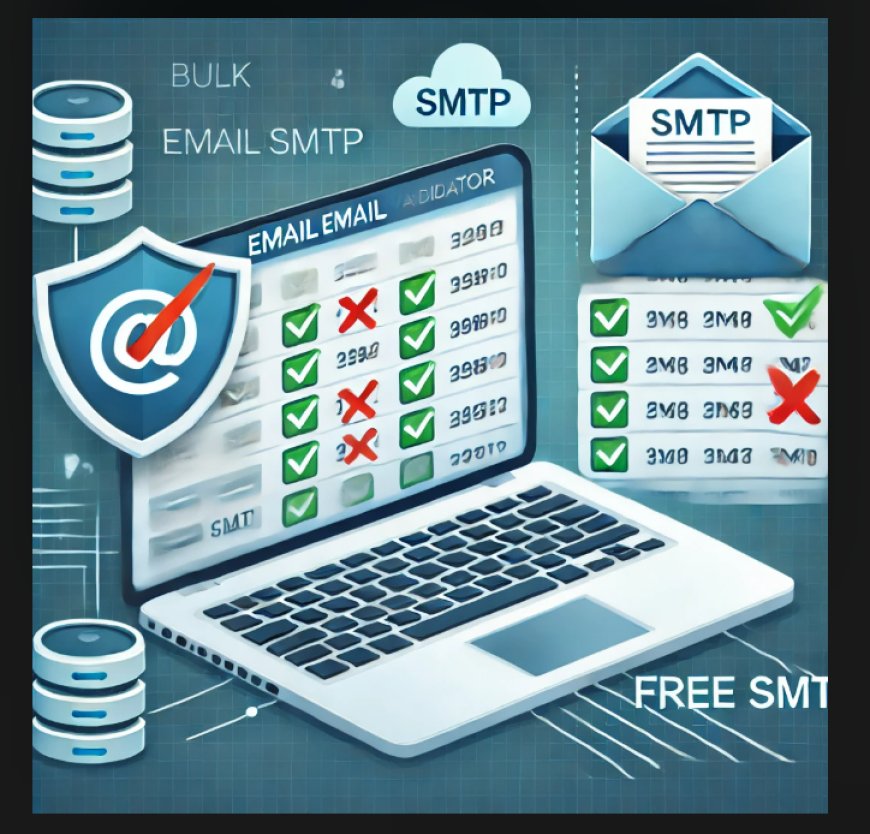Creating a bulk email validator
Creating a bulk email validator website involves several steps, including setting up the front-end, back-end, and integrating an email validation API or library. Below is a step-by-step guide to help you build a basic bulk email validator website

Step 1: Plan the Website
-
Purpose: Validate a list of email addresses in bulk.
-
Features:
-
Upload a CSV or TXT file containing email addresses.
-
Validate emails (check syntax, domain, and mailbox existence).
-
Display validation results (valid, invalid, disposable, etc.).
-
Download the validated list.
-
Step 2: Choose a Tech Stack
-
Front-end: HTML, CSS, JavaScript (React, Vue, or plain JS).
-
Back-end: Node.js, Python (Flask/Django), or PHP.
-
Database: Optional (if you want to store results).
-
Email Validation API: Use a third-party API like:
-
Or use an open-source library like email-validator (Python) or validator.js (Node.js).
Step 3: Set Up the Front-End
Create a simple interface for users to upload files and view results.
Bulk Email Validator
Results
Step 4: Set Up the Back-End
Use a framework like Node.js (Express) or Python (Flask) to handle file uploads and email validation.
Node.js Example
-
Install dependencies:
npm install express multer validatorCreate server.js:
const express = require('express');
const multer = require('multer');
const validator = require('validator');
const fs = require('fs');
const path = require('path');
const app = express();
const upload = multer({ dest: 'uploads/' });
app.use(express.static('public'));
app.post('/validate', upload.single('file'), (req, res) => {
const filePath = req.file.path;
const emails = fs.readFileSync(filePath, 'utf8').split('\n').map(email => email.trim());
const results = emails.map(email => {
return {
email,
valid: validator.isEmail(email),
};
});
fs.unlinkSync(filePath); // Delete the uploaded file
res.json({ results: results.map(r => `${r.email}: ${r.valid ? 'Valid' : 'Invalid'}`) });
});
app.listen(3000, () => {
console.log('Server running on http://localhost:3000');
});Run the server:
node server.jsStep 5: Integrate Email Validation API
If you want to use a third-party API, replace the validation logic in the back-end with API calls.
Example using ZeroBounce API:
const axios = require('axios');
async function validateEmail(email) {
const apiKey = 'YOUR_ZEROBOUNCE_API_KEY';
const url = `https://api.zerobounce.net/v2/validate?api_key=${apiKey}&email=${email}`;
try {
const response = await axios.get(url);
return response.data.status === 'valid';
} catch (error) {
console.error('Error validating email:', error);
return false;
}
}Step 6: Deploy the Website
-
Use platforms like Vercel, Netlify, or Heroku for deployment.
-
Ensure your back-end is hosted on a server (e.g., AWS, DigitalOcean) if using a custom back-end.
Step 7: Test and Optimize
-
Test the website with different file formats and email lists.
-
Optimize for performance and scalability if handling large files.
This is a basic implementation. You can enhance it with features like:
-
User authentication.
-
Payment integration for premium validation.
-
Advanced email validation (e.g., checking for disposable emails).
What's Your Reaction?




































































